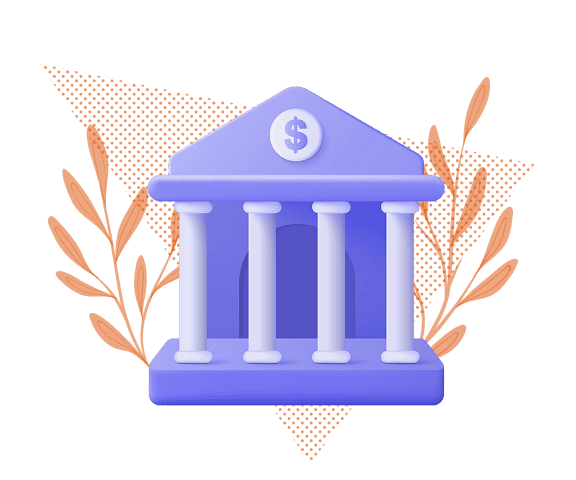How APY and Interest Rates Affect Your Savings
Updated: 22 Jul 2025
Written bySingSaver Team
Team
The information on this page is for educational and informational purposes only and should not be considered financial or investment advice. While we review and compare financial products to help you find the best options, we do not provide personalised recommendations or investment advisory services. Always do your own research or consult a licensed financial professional before making any financial decisions.
When comparing savings accounts or fixed deposits in Singapore, you’ll often come across two numbers: APY (Annual Percentage Yield) and the interest rate. While they may look similar, they don’t mean the same thing — and understanding the difference can help you maximise your returns.
Let’s unpack the difference so you can make better money moves.
» Get a refresher on some essential investment terms
APY vs. interest rate: What’s the difference?
Here’s the simplest way to understand the two:
-
Interest rate is the base rate a bank pays you on your deposit. It’s expressed as a percentage per year, but it doesn’t factor in compounding — that is, earning interest on your interest.
-
APY, or Annual Percentage Yield, shows your actual yearly earnings after factoring in compounding.
In other words, APY gives you a more accurate picture of your return because it reflects the frequency with which interest is added to your balance — whether it’s daily, monthly, or annually.
So, if two banks offer the same 5% interest rate but one compounds interest monthly while the other compounds annually, their APYs will be different — and the monthly compounding one will earn you more.
» What’s so good about compound interest? Find out the effects of compounding interest – how it works and why it matters to know
Top cash management accounts in Singapore 2025
Discover flexible, high-yield options to grow your idle cash without compromising on liquidity.
Why APY matters more when choosing a savings account
If you're shopping around for the best savings account or fixed deposit, focus on APY — it gives a clearer picture of your actual yearly returns.
Interest rate alone can be misleading because it doesn’t account for how often your earnings are compounded. But APY does, which is why it's the go-to number for comparing products.
» Deep dive into how to get a little richer with the magic of compound interest
SingSaver Tips
When comparing savings accounts or fixed deposits, always check if the APY is based on daily or monthly compounding. Daily compounding earns you slightly more — and over time, that difference can quietly boost your returns without you lifting a finger. Think of it as passive income’s quiet upgrade.
How compounding increases your earnings: A simple example
Let’s say you deposit $10,000 into a savings account with a 5% interest rate, compounded monthly. Because interest is added to your account each month and then earns more interest the following month, your money grows slightly faster than it would with simple interest.
Here’s how that plays out over three years:
-
Year 1:
You start with $10,000. With monthly compounding at a 5% interest rate, you’ll earn about $512.68 by the end of the first year. That brings your total balance to $10,512.68. -
Year 2:
Now, your starting balance is $10,512.68. With compounding interest applied to this larger amount, you earn around $538.50 over the second year. By the end of Year 2, your balance grows to about $11,051.18. -
Year 3:
Starting with $11,051.18, you earn approximately $566.21 in Year 3, thanks to monthly compounding on the higher balance. At the end of the third year, your total balance reaches roughly $11,617.39.
In total, you’ve earned $1,617.39 in interest over three years.
With simple interest, you only earn interest on your initial deposit — not on the interest itself. So if you deposit $10,000 at a 5% annual interest rate, here's what your earnings would look like without compounding:
-
Simple interest per year = $10,000 × 5% = $500
-
Over 3 years = $500 × 3 = $1,500
Now compare that to what you’d earn with compounding:
-
Compounded total after 3 years = $11,617.39
-
Total interest earned = $11,617.39 – $10,000 = $1,617.39
So yes — that’s $117.39 more than the $1,500 you would have earned with simple interest alone. And that’s all thanks to the power of compounding.
The bottom line? The longer your money stays put, the better compounding works in your favour. Even small differences in APY can lead to hundreds (or thousands) of extra dollars over time.
Use online tools to convert APY and understand your savings
If the maths proves difficult, it’s time to take advantage of the many handy online calculators available with a quick search. These tools can quickly convert between APY and interest rate based on the compounding frequency, helping you understand the true return on your money.
You don’t need to be great at math — just plug in the numbers and let the calculator do the work. A quick search will turn up plenty of reliable options to help you make smarter, better-informed savings decisions.
Unlock the power of APY: Grow your savings as efficiently as possible
Dive into our comprehensive guide to make informed decisions and enhance your financial returns.
Frequently asked questions about APY and interest rates
The interest rate is the flat annual rate, while APY includes compounding — which means it reflects the actual amount you’ll earn in a year.
Because of compounding. APY includes the extra interest you earn when your interest is added back to your balance and earns more. The more frequently it’s compounded, the higher your APY.
About the author
SingSaver Team
At SingSaver, we make personal finance accessible with easy to understand personal finance reads, tools and money hacks that simplify all of life’s financial decisions for you.
